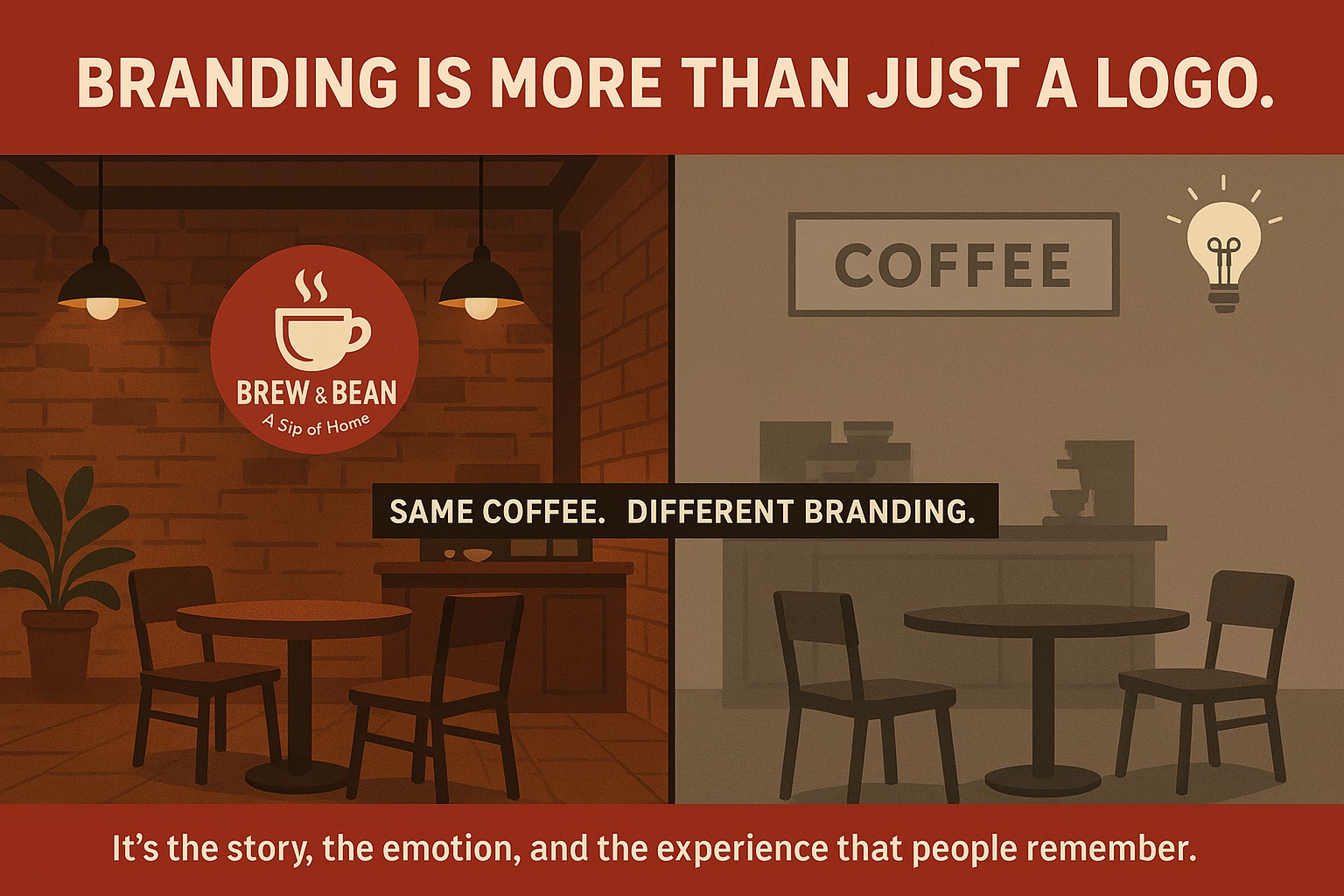
The Story of Two Coffee Shops
Two competing coffee shops opened on the same street within the city walls. They both sold good coffee, had friendly baristas, and warm-aura environments...within a span of one year, one was thriving while the other struggled to attract customers. Difference ? Branding. Successful coffee shop, named Brew and Bean, didn't just sell coffee; it sold an experience. As soon as the moment customers stepped in, they felt a sense of belonging. The rustic tables, the earthy colours on the walls, and the smell of coffee in the air made this particular coffee shop come to life. The logo 'steaming mug ' became an iconic logo overnight. The tagline "A Sip of Home" struck a chord with their customers. In every point of communication, from the website to the Instagram page,they carried the same homey feel. People would not just go there for the coffee; they would go there for the story of Brew & Bean through branding. On the other hand, the other shop had a great coffee but didn't really have a strong identity. The logo looked uninspiring, the messaging was never consistent, and there was a weak social media presence. Customers never developed an emotional attachment to the coffee shop; thus, they just called it another coffee shop in a crowded marketplace.
Branding: More Than a Logo
Branding isn’t just having a fancy logo or a well-designed colour scheme. It deals with feelings and beliefs that people associate with your business. A brand describes the identity, voice, and experience that any business creates for its customers. All in all, when correctly done, branding converts first time buyers to loyal customers and casual visitors to brand advocates
Why branding matters
1.First Impression Count: Your brand is the first interaction potential customers have with your business. A strong identity creates an immediate attention. 2. Trust and reliability: Brand consistency creates reliability. Customers are more likely Choose a brand that they recognize and trust. 3.Emotional relations: brands aligning with customer's values and feelings create a Strong and long -term relationship. 4. Market Differentiation: Strong branding really helps a business stand out in a crowded marketplace. 5. Customer Loyalty & Advocacy: Customers do not only purchase products; they purchase brands. Building good brand identity creates loyalty and greatly pushes word-ofmouth marketing. Elements
Elements of a strong brand
A successful brand is built on several major components: 1. Brand strategy This is the foundation of your brand. It defines your mission, vision, values and position market. A strong strategy ensures that your brand communicate consistently across all platforms. 2. Brand Identity Your logo, color palette, typography, and style of imagery should come together under one umbrella to create cohesive identity. These elements should be relatable and embody the essence of your brand personality. 3. Brand Voice and Messaging The way you speak to an audience is as important as what you say. Is the brand your playful and friendly? Assertive and professional? Whichever it is, this voice must hold true and must remain consistent across all customer interactions. 4. Customer experience A customer is with your business - from your website and social media to Customer service and packaging -Your brand values should reflect. 5. Brand storytelling People love stories. A compelling brand story that explains your journey, values and mission makes your business engaging and approachable. Customers want to feel connected to the story of your brand.
How to make a strong brand
1. Understand your audience: It is important that you should have a clear understanding of your target and their preferences. 2. Develop a clear message: Get to know and understand your customers well and tell them what benefits your products or services will give them . 3. Maintain stability: Social media to packaging, ensure all touchpoints, reflect brand recognition. 4. Attach with customers: Create relationship with your audience through meaningful Conversation. 5. Evolve if Necessary: Adapt branding strategies to remain relevant in the changing market.
The Success Story of Brew & Bean
Due to its powerful branding, Brew & Bean is easily recognized in the city. To Brew & Bean's customers, coffee was not the reason to go there; comfort and connection were. The shop's branding defined it as more than just a coffee destination; it was an
Conclusion
Branding is more just a logo; branding is all about perception, connection, and experience. A distinct brand cultivates trust, builds loyalty, and drives success. So whether you are a startup or an established business, investing in branding is a must.